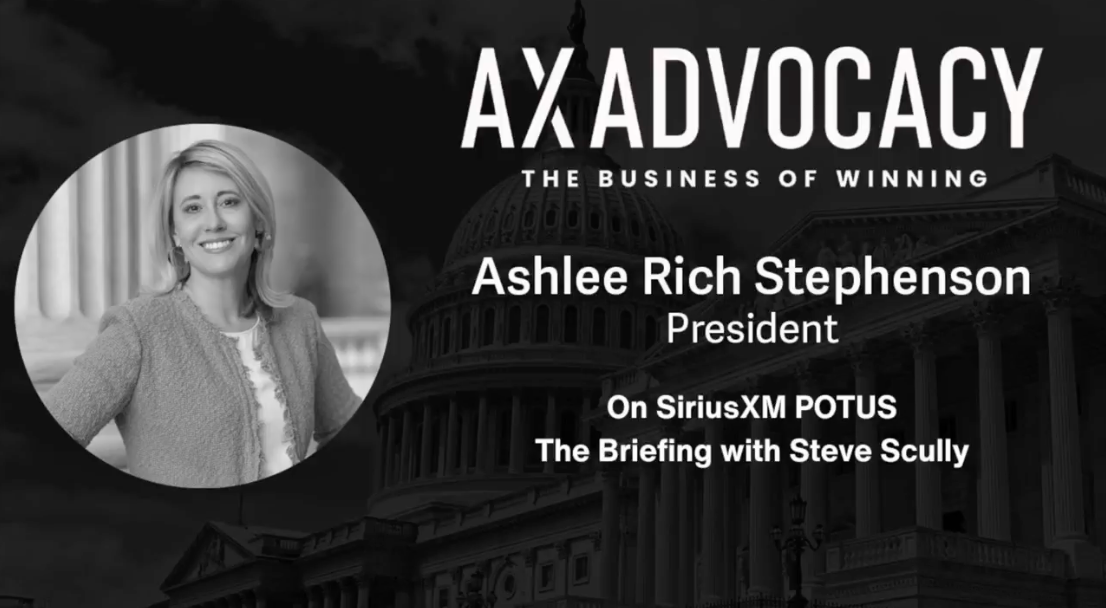Pennsylvania is THE Battleground State
As the presidential election heads into the home stretch, Pennsylvania has emerged as the top battleground state. Below is an analysis of what each campaign will be focused on in the run-up to Election Day from our Ax Pennsylvania team – Alex Rahn, Rob Brooks, Julia Vahey and Anthony Pontarelli.
Pennsylvania has historically played a decisive role in presidential races, and 2024 will be no exception. The Commonwealth is arguably the main battleground state that will determine who wins the 2024 election for the White House. Winning Pennsylvania will be critical for both the Harris and Trump campaigns.
However, polling in Pennsylvania has essentially been tied, so what will it take to win Pennsylvania in the next few weeks before Election Day?
While very few voters remain undecided, each campaign must focus on key get out the vote (GOTV) strategies and highlighting policy positions that will energize their supporters.
As in other states, the economy dominates as the top issue in most polls. Other topics, including abortion and immigration, will galvanize key voter blocs and drive turnout for the Harris and Trump campaigns on Election Day.
Additionally, the presidential election in Pennsylvania will likely determine the outcome of downballot races, including the US Senate race between incumbent Bob Casey (D) and challenger Dave McCormick (R), three other statewide row office campaigns, and even control of the PA General Assembly. Indeed, the current Democratic majority in the PA House of Representatives is held by one seat and control will likely come down to which presidential candidate carries key swing districts.
Harris Campaign: Keys to Winning Pennsylvania
- Maximizing Turnout in Philadelphia
Pennsylvania’s largest city, Philadelphia, is a Democratic stronghold, and Harris will need to drive high turnout to counterbalance Republican-leaning rural regions. The campaign must ensure that voters are energized by focusing on issues such as police reform, economic opportunity, reproductive rights, and health care access. A key tactic will be voter registration and turnout efforts, especially in historically underrepresented communities. - Winning Over the Philadelphia Suburbs
The “collar counties” around Philadelphia—Montgomery, Bucks, Chester, and Delaware—have trended Democratic over the last decade, and Trump has only accelerated this shift. In 2020, Biden won 54 percent of suburban voters, according to the Pew Research Center. Harris needs to not just maintain the margins Democrats secured in 2020 but expand on them by highlighting issues that connect with suburban voters, particularly women, and independents. Messaging around reproductive rights, education, gun control, and climate change could resonate in these affluent suburban areas. Economic stability and inflation concerns will also play a role, requiring a balanced message of prosperity and equity. - Limiting Losses Among Working-Class Voters in Pittsburgh and Western PA
Western Pennsylvania, particularly Allegheny County (Pittsburgh), has traditionally supported Democrats, but Trump made inroads with white working-class voters in surrounding areas. Harris will need to focus on turnout in Pittsburgh’s urban center while addressing the concerns of blue-collar voters in the more industrial parts of the region. Messaging around the economy, job creation, infrastructure, union support, and reliable energy jobs will be key to limiting losses among these working-class voters. However, Harris’s past support for a fracking ban will be toxic in Western Pennsylvania. - Reaching Out to Rural Voters in Central and Northern PA
Though rural Pennsylvania is solidly Republican; the Harris campaign cannot afford to ignore these voters entirely. By focusing on policies that affect farmers, small businesses, and rural healthcare, Harris may be able to reduce the Republican margins here. While winning these counties outright is unlikely, minimizing the deficit can be just as valuable in the overall vote tally. - Youth and College Voter Engagement
Pennsylvania is home to numerous colleges and universities, including Penn State, Temple, University of Pittsburgh, and the University of Pennsylvania. Harris will need to energize younger voters, who lean Democratic but often have lower turnout rates. Gen Z and Millennials played a large role in the 2022 midterms, voting heavily for Democratic candidates and exceeding their turnout from 2018. But a recent poll from CNN should serve as a warning flag for the Harris campaign. While Harris leads Trump among young voters, her margin is falling well short of Biden’s in 2020. The top issue among young voters, like every age group is the economy, and they are dissatisfied with the current direction of the country. Failure to address the Biden-Harris administration’s shortcomings on inflation, housing costs, and other key economic issues could be catastrophic for the Harris campaign. - Latino and Black Voter Turnout
The growing Latino population, particularly in cities like Philadelphia, Allentown, and Reading, represents an opportunity for Harris to expand her base. Outreach to Latino communities on immigration reform, healthcare, and economic opportunity will be crucial. Similarly, strong turnout among Black voters, especially in Philadelphia and Pittsburgh, will be vital for Democratic success. However, recent polls have shown Harris performing worse than Biden among these voters, with Trump cutting into her margins among these traditionally Democratic-leaning demographics. If that trend holds, Harris will be hard-pressed to win in Pennsylvania.
Trump Campaign: Strategies for Winning Pennsylvania
- Maximizing Turnout in Rural and Small-Town Pennsylvania
Trump’s path to victory in Pennsylvania runs through its rural and small-town regions, particularly in central and northern Pennsylvania. This is the famous “T” that many national pundits reference, and is where Trump performed well in both 2016 and 2020. To win the state, Trump must not only replicate but surpass his previous margins in these areas by further mobilizing rural voters who feel disconnected from urban and coastal elites. However, Vice President Harris is putting up a fight for these voters; 16 of the Harris campaign's 50 offices are in predominantly rural counties that Trump carried in 2020 by double digits. The Harris campaign has also launched a new ad geared towards this bloc of voters on digital and radio, which is estimated to reach more than 500,000 likely voters who don’t live in metro areas around cities or suburban counties. The Trump campaign cannot afford to lose this base and must emphasize issues like deregulation, Second Amendment rights, and opposition to environmental policies seen as harmful to coal, gas, and manufacturing jobs, and obviously, his America First economic message will resonate deeply in these communities. - Holding Steady in the Pittsburgh Region
While Pittsburgh itself tends to vote Democratic, the surrounding counties—Westmoreland, Washington, Beaver, and Greene—are critical to Trump’s success. These areas have a strong working-class presence, many of whom feel aligned with Trump’s populist message. Trump must continue to highlight his America First economic policies, trade tariffs, and opposition to environmental regulations that are perceived as a threat to traditional industries. Reinforcing his commitment to manufacturing and traditional fossil fuel energy jobs could help secure this key voting bloc, as could reminding voters of Harris’s past support for banning fracking, an industry that employs or supports hundreds of thousands of western Pennsylvania jobs. - Chipping Away at the Suburban Vote
Trump lost substantial ground in the Philadelphia suburbs for his re-election in 2020, particularly among women and moderate Republicans. To win Pennsylvania in 2024, he’ll need to make significant inroads in these counties. His campaign will likely focus on crime, school choice, and inflation—issues that can resonate with suburban families concerned about safety and economic security. Targeting messaging toward suburban men, particularly on law and order and economic growth, while softening his image for women will be crucial. Voters in the Philadelphia Suburbs have also traditionally been ticket splitters with Democrat Presidential candidates winning the region since 1992 while the counties and local offices remained Republican until recently. While these counties are now mostly blue, registration numbers between Republican and Democrats do not reflect this, meaning Republican voters are now even more likely to vote for Democrat candidates up and down the ticket. Trump cannot take these moderate Republican voters for granted. A strong focus on the economy will be key to winning over these voters. - Making Gains with Latino and Black Voters
Trump made modest gains with minority voters in 2020, and he’ll need to build on that progress in Pennsylvania, particularly in urban areas like Philadelphia, Reading, and Allentown. His messaging should focus on economic opportunity, entrepreneurship, and school choice—issues that resonate with conservative-leaning segments of these communities. By focusing on law and order and criminal justice reform, Trump could further appeal to Latino and Black voters concerned about safety in their neighborhoods. - Turnout, Turnout, Turnout
For Trump, winning Pennsylvania means driving record turnout among his base. This includes not just rural voters but also disaffected Democrats, Independents, and non-college-educated white voters who were crucial to his 2016 win. Democrats currently have the slimmest voter registration advantage in decades. New registration data from the PA Department of State shows 3.9 million Pennsylvanians are registered Democrats compared to 3.5 million Republicans, and Republicans have seen an increase of 141,648 voters in the last ten months compared to a 33,478 increase for Democrats. The Trump campaign must capitalize on this momentum with a strong ground game focused on continued voter registration, GOTV efforts, embracing vote by mail, and ensuring that supporters turn up at the polls. - Targeting Voter Frustration
Trump can capitalize on frustrations with inflation, rising interest rates, and perceived ineffectiveness in Washington. By positioning himself as the candidate who can "fix the economy" and tackle issues like crime and immigration, he may sway undecided voters in key swing counties. His populist message, focusing on economic nationalism and a rejection of "woke" policies, could appeal to voters looking for a candidate who promises to disrupt the political establishment.
The Key Battlegrounds in Pennsylvania:
- Philadelphia: Harris must dominate in turnout, especially in minority communities.
- Pittsburgh: Harris needs strong margins in the city, while Trump must win in the surrounding counties.
- Philadelphia Suburbs: Harris needs to expand her suburban base, while Trump must regain lost ground.
- Rural Counties: Trump must dominate here and increase turnout to offset Harris’s urban advantages.
In short, Pennsylvania will come down to who can effectively mobilize their base by emphasizing key issues to win over crucial swing voters in the suburbs and industrial regions. Both campaigns will need a targeted strategy that addresses the diverse needs and concerns of Pennsylvania’s electorate. Each campaign must have incredible GOTV strategies and teams that leave no voter untouched.

The top battleground counties in Pennsylvania (red) – Allegheny, Bucks, Chester, Dauphin, Delaware, Lackawanna and Montgomery – and crucial Democrat turnout county (blue) – Philadelphia.
Solid = enacted • Light = in progress • Gray = no action. Hover any state for status and estimated seat swing.










